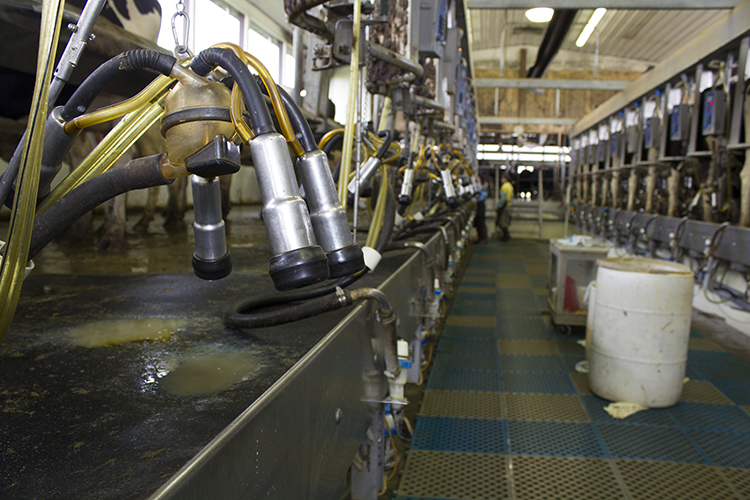
Cows must be milked twice or three times per day, 365 days of the year. For this reason, the milking center is an extremely vital part of every dairy farm.
There are primarily two types of milking facilities on U.S. dairy farms: tie stall or stanchion barns and milking parlors. Tie stall or stanchion barns were the way most cows were milked for decades, but milking parlors have continued to gain ground. Still, slightly more than half (52.6 percent) of farms milk in a tie stall or stanchion barn, compared to 45.8 percent milking in a parlor.
According to newly released data from the USDA in their “Dairy 2014: Milk Quality, Milking Procedures and Mastitis on U.S. Dairies, 2014” report, not surprisingly, small farms are more likely to use tie stall setups for milking. Nearly three-fourths of very small (fewer than 30 cows) and small (30 to 99 cows) farms used tie stall or stanchion barns for milking. That number dropped to 19.3 percent for medium-sized herds with 100 to 499 cows.
Meanwhile, 79.4 percent of medium-sized herds used a milking parlor. Essentially all large herds over 500 cows (99.8 percent) used a milking parlor.
Among all operations, 1.6 percent used another type of facility, which would include robotic milking systems.
While more farms used tie stall or stanchion barns for milk collection, significantly more cows overall were milked in parlors. Close to 87 percent of the nation’s cows were milked in parlors, while 13.1 percent were milked in tie stall or stanchion barns.
September 26, 2016








